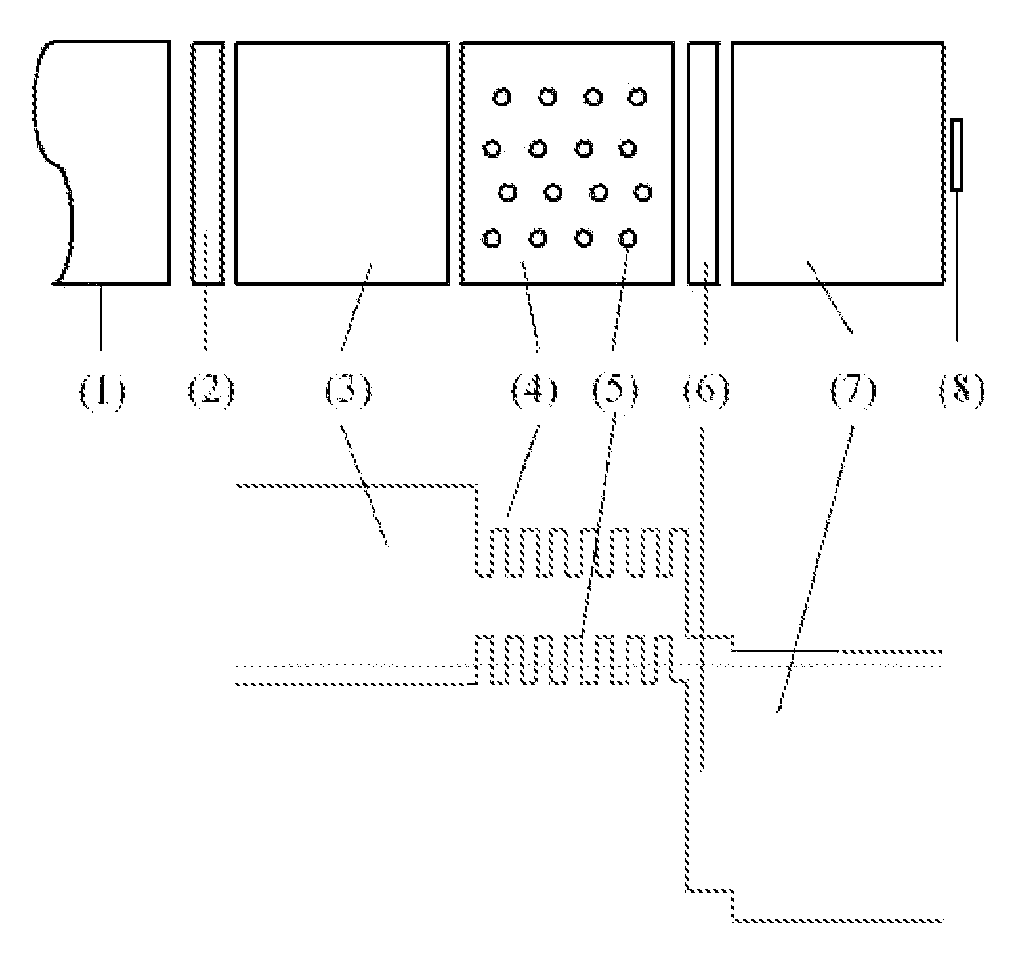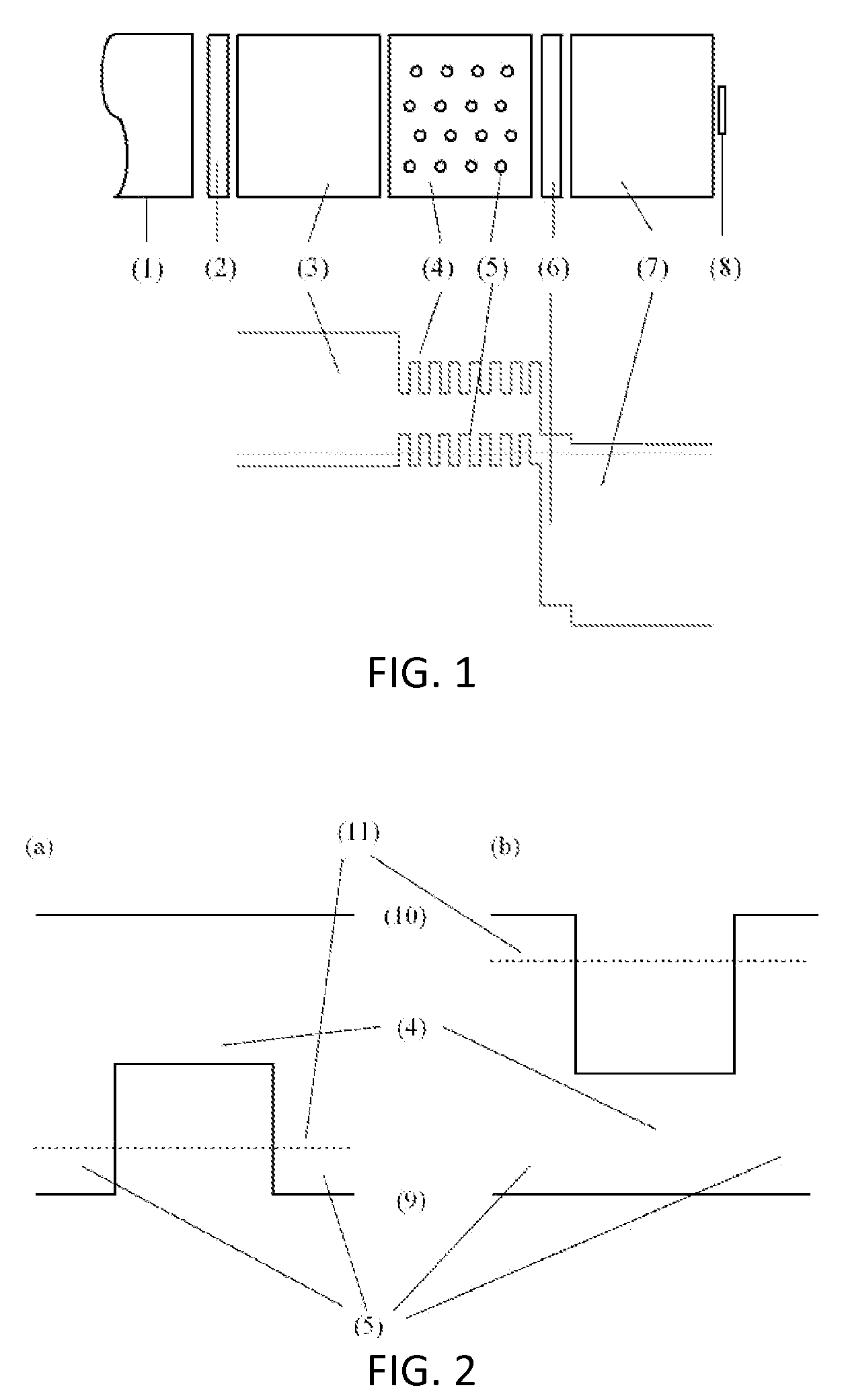Method for manufacturing of optoelectronic devices based on thin-film, intermediate-band materials description
- Summary
- Abstract
- Description
- Claims
- Application Information
AI Technical Summary
Problems solved by technology
Method used
Image
Examples
Embodiment Construction
[0012]The present invention refers to the manufacturing of optoelectronic devices based on thin-film IBMs, starting from a manufacturing procedure of nanoscopic structures of multinary compounds of the chalcopyrite type, e.g., (Cu,Ag)(Al,Ga,In)(S,Se,Te)2 and derivatives obtained from deviations in the stoichiometry, the so-called I-III3-VI5 and I-III5-VI8 compounds, as described before (DE 102006060366.4-43, Phys. Rev. B 77, 085315, 2008). According to the referred procedure, it is possible to embed nanoscopic structures inside a semiconducting matrix in a single technological process, resulting in an IBM. The novelty of the design lies in the incorporation of such a procedure into the typical processing sequence of thin-film devices, by which thin-film intermediate band solar cells can be obtained.
[0013]This structure is formally analog to that described in the literature as an IBM obtained from epitaxial growth of III-V compounds. However, the method proposed has a number of advan...
PUM
 Login to View More
Login to View More Abstract
Description
Claims
Application Information
 Login to View More
Login to View More - R&D
- Intellectual Property
- Life Sciences
- Materials
- Tech Scout
- Unparalleled Data Quality
- Higher Quality Content
- 60% Fewer Hallucinations
Browse by: Latest US Patents, China's latest patents, Technical Efficacy Thesaurus, Application Domain, Technology Topic, Popular Technical Reports.
© 2025 PatSnap. All rights reserved.Legal|Privacy policy|Modern Slavery Act Transparency Statement|Sitemap|About US| Contact US: help@patsnap.com


